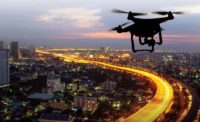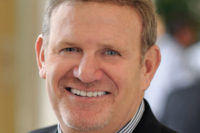The role and value of private security officers has always been clear to those in the security business. But “guard jokes,” from cartoons to movies are taking a back seat to reality as Newtown and other (now routine) mass shootings awakened the general public’s consciousness to the value and need for trained, professional security officers.
The 26 murdered in a Newtown, Connecticut, school join a tragic list of 151 mass shooting victims in 2012. A recent report by Mother Jones, “A Guide to Mass Shootings in America,” identified 62 mass shootings since 1982, including 25 since 2006. The guns used in 49 of those incidents were obtained legally. The NRA has promoted the use of armed guards in every school after Newtown (calculated to cost $5.4 billion) as the solution: “The only thing that stops a bad guy with a gun is a good guy with a gun,” says the NRA’s Wayne LaPierre. But addressing the active shooter threat requires more than a “fight fire with fire” discussion.
As every security professional understands, there is no silver bullet to stopping threats or eliminating vulnerabilities. Security 500 research has identified the use of a “layered” security approach so that if one measure fails, secondary and backup measures take effect. It is the intersection of people, processes and technology – strategically designed and well executed – that identify risks and create resilience for enterprises.
In Marlboro, New Jersey, the 2013 school year began with an armed officer in every school. Marlboro Mayor John Hornik says, “Ask any parent in Newtown if they wish they had an armed guard in their school. The world changed after Newtown.” He is also looking at long-term solutions including technology and building design. Additional news stories from Emporia, Kansas; Elwood City, Pennsylvania; and Maricopa County, Arizona, followed Marlboro’s announcement that arming security officers was being implemented or armed volunteer patrols would become regulars within the schools.
This issue’s Special Report: Security Officer Success, focuses on the people, the officers that are in the spotlight as those we will trust to have a calming effect, be a deterrent and when necessary be the first responders, thereby putting themselves on the front line.
Doug Fogwell, Senior Vice President of Allied Barton wrote in Security this past October, “These hard-working, highly trained men and women are our country’s first responders who have a wide range of skills – from the sensitivity to deal with lost children to the ability to respond to and effectively address criminal activity. Security officers are often put in high-risk situations as they confront and detain criminals engaged in theft, trespassing, gang activity and other unlawful behavior.
“Real world security officers work in partnership with local law enforcement, and some security officers have previously served in law enforcement and military positions.
“State-of-the-art training is crucial in keeping the flourishing physical security workforce ready and able to take on the daily challenges they face. Nowhere is technology’s power more visibly demonstrated than with training that educates, empowers and connects the vital security officer sector.”
And security officers are becoming more vital. The Freedonia Group forecasts the private security officer industry will grow 4.6 percent to $25 billion in revenue by 2014 (forecast prior to Newtown). The U.S. Department of Labor identifies 1,033,000 private security officers employed. The training, purpose and role of the profession need to be made clear to those it seeks to serve, through information and education – marketing really.
Not all officers (or their job descriptions) are created equally. What is the purpose and role of the uniformed officer in a specific setting or situation? Does the public expect that person in uniform to be the first responder to take appropriate action in any emergency? It is unlikely all 1,033,000 professionally trained officers are ready to do so. For example, is an “asset protection officer” at a retail store trained for a medical emergency, fight or fire? Or is that officer simply there for loss prevention? It is an important question because the retailer may face greater liabilities if an officer takes action for which he is not trained.
Question: If a school district employs armed guards to protect teachers, students and administrators, is that the limit of their role? Are they expected to just stand post (like the Royal Guards and ignore tourists) as protectors and look the other way from smoking in the bathroom, asset theft or drugs? Does protecting students from outside threats stop there? Or is that officer now a deterrent against all things illegal? And if so, will the public have to weigh protecting their children in a violent world against raising them in a “Big Brother” world? The debate has already begun in communities across the country.
As a result, the officer profession is at a critical point in the public eye. The role, training and scope of the private officer role will be at issue as calls for more security and armed officers increase, in all public places including schools. This is an important time for communication and training across your enterprise to ensure clear understanding of exactly what your stakeholders and board should and should not expect from their professional officer corps. And as Mr. Fogwell stated, no one should expect or get the “Mall Cop” character.
This article was orginally published in the print magazine as "‘There’s an Officer on Deck’."



